The Cornell Lab Bird Academy › Discussion Groups › Joy of Birdwatching › Activities: Bird ID Practice
-
Activity 1 - here in Ontario, Canada, I have always felt sorry for the bigger birds that cannot use my feeders due to their size. When it starts to really get cold, I usually buy some cheap dry cat food and will throw out some each morning after I put the dog out out. These birds are waiting for me now and will call out, expecially the crows to their mate, when they see me. Yes, they have me trained. I find beauty in the the blackness and intelligence of the crows and have really grown to appreciate the cunninest and antics of the starlings. They keep me amused for hours. Meet Edgar the crow and note the disgusted look on the starling as he tries to land on my empty suet feeder.


-
Activity 1: I watched the Ontario Bird Cams. It was easy to identify the Common Redpolls, Pine Grosbeaks, and the Black-capped and Boreal Chickadee by size, shape, and color even though I have never seen them in real life. I apologize, I should have marked my last post as Activity 3.
-
In the winter we have a steady supply of birds coming to our feeders and drinkers. Here is a beautiful Northern Flicker female waiting for the suet, and by chance, a Mountain Chickadee at the suet in the same picture. Our White Breasted Nuthatches really like the suet as well. We also have Cassin's Finches, Dark Eyed Juncos, Canyon and Spotted Towhees that like to forage for seeds on the ground and rarely visit the suet. Our Woodhouse's Scrub Jays like the suet and the seed on the ground.

-
Activity 1: Watching the Bird Cam link, I identified a nuthatch and a sparrow on my own by shape, color and markings. I did need some help deciphering which type of sparrow was on the screen, though.
-
Activity one: I was looking out into my backyard and I identified two birds. I noticed that one was very tall. I chose that the bird was goose sized or larger. it’s main colors were blue, brown and gray. The bird was wading so on the list, I found that it was a great blue heron. The other bird I saw was about goose sized And its main color was black. The bird was on the ground and I identified it as a double crested cormorant.
-
Activity 4: I don't really have a favourite bird yet, but a bird I have only seen a few times which I really like is a smallish bird (bigger than a sparrow, smaller than a robin), with bright blue head, back and wings, orange throat and sides, and white belly. It has a short neck and short bill. It is found in southern Ontario year-round, though I rarely see it. The Eastern Bluebird!
-
Activity 1: I used a boreal bird cam, so looking at an area further north than I live. I saw two species of bird on a feeder, which I used Merlin to identify using size, colour, location, feeding habit. Really great tool! I've only used it for sound ID before, so using it this way with a bird feeder was great practice. I identified one bird as a Pine Grosbeak - I recognized it at sight as a finch based on its shape and beak, which was progress! I became sure of my ID once a female joined the fun at the feeder. The second bird was a little more tricky - a sparrow of some kind, I saw right away. It had a red cap, a bit of black on the face, but otherwise just looked like a generic sparrow to my untrained eye. It was after I started going through the suggestions, and reading the descriptions, that I noticed it had a notched tail and that some had a pink wash on their breast. I was able to ID it as a Common Redpoll. This is such a great way to hone my observation skills from the comfort of my living room! Helpful activity :)
-
I’m 75, live in an apartment with a patio. We’re not allowed to hang feeders, but hummingbirds are ok. We were surprised to find a chipmunk had discovered the sweet treat.

-
I saw a Mourning dove at the feeder and a sparrow at another feeder. Very easy to identify by their size, shape and coloring.
-
My sister sent me a photo yesterday of a new bird at her feeder: a orangish-yellow bird with a body shape like a robin, but with a longer beak. Given our location, I thought it could be an oriole, though I've never seen one before. Merlin ID alternately suggests a female Baltimore or Orchard Oriole. Based on the color/markings, I'm leaning Baltimore (larger wing bars, more orange in tone).
-
Activity 4: My favorite bird has a larger size, larger than a crow. It has a drab, brown color, with tufted feathers on the top of the head, and white feathers on the throat. My favorite bird has a distinct behavior of hunting for prey at night; it has large eyes for accomplishing this. The range of this bird is the continental United States, Canada, Mexico, and parts of Central and South America. This is a solitary bird. This bird has a distinct call, a "hoot" that comes in three then two (Hoo-Hoo-Hoo Hoo-Hoo) My favorite bird is the Great Horned Owl; I had the fortune of seeing and hearing one while it perched on the lamppost outside my house. When/if I see it next, hopefully I can capture some photographs of it!
-
Activity 2: I have been working on identifying waterfowl. First, it can be hard to see the details if the bird is far from shore and/or the water is wavy. Then, there is the trouble of females sometimes being duller and quite different from the male of a species, but very similar to females of other, maybe related species. The female Common and Red-throated Mergansers are very tricky. I usually make my decision based on the length of the bill (and maybe how full it is, if I have a good angle), kind of like the difference between the Downy and Hairy Woodpeckers. I also try to get a picture to see if Merlin is more confident in identification than I am. But then, sometimes I make my guess based on what others saw and listed on EBird, like today the Greater Scaup couple I saw was a bit distant, on grey, windy day. The male was not as well seen. Someone else said Greater Scaup on EBird, while I flipped open Merlin and my Kaufman to see if I could tell. Sometimes, you just have to add a question mark.
-
Getting to know the Merlin ID was a great experience for me: with its help, I was able to identify several bird species that I had not been able to do before, and it was a pleasure to learn how many wonderful creatures live in our garden.
-
By Shape - House Finch vs Downy Woodpecker. (House Finch) Small sparrow-like bird that spends the day at the feeders and happily chases away other birds. Downy Woodpecker is larger and hangs off the suet feeder. He visits only intermittently. By Color - Red - Cardinal is red all over. House Finch is raspberry on head and back. Common Flicker has spotted chest but a bit of red on the back of the head. By Food finding behaviors - House Finches eat seeds from the feeder almost continuously. Downy Woodpeckers eat suet from the suet feeders intermittently. Mourning doves eat seeds from the ground under the feeders for most of the day. Favorite Bird - It must be the Northern Cardinal because I gasp every time I see one. Cardinals are bigger than a sparrow but smaller than a crow. The Cardinal might be just a little bit smaller than the Blue Jay that visits once in a while. The Male Cardinal is really red all over. The Female is a lighter shade.....almost a salmon to dusty orange. They are shyer than the chickadees or the finches and fly away quickly if there is any movement near the feeders. I'm pretty sure I have a pair living in my yard which has a lot of tree cover because I can hear the cheer, cheer, cheer high in the trees when I am working in the yard.
-
One of my favorite birds is the Dark-eyed Junco. It comes around this time of year. It’s a medium sized sparrow with a small head and slightly chubby. They are a dark grey almost silvery color with a white underbelly. They usually eat off the ground. I saw this one in my backyard. (Sorry it’s not a great photo but I didn’t want to scare it by getting close.)

-
I observed with my Grandmother two birds. One was a Great Egret and the other one was a Northern Cardinal. Differences were: Great egret - long neck, white color, bill shaped like a spear to eat fish, large bird Northern Cardinal - short neck, red, bill shaped like a triangle to eat seeds, small to med size bird.
-
Activity #4: We have these beautiful Red-shouldered Hawks in our area. I've always wondered what they are. I figured they were hawks of some sort, but did not know what type. Now that I've starting my birdwatching hobby, I've discovered what type of hawk. My Merlin ID app picked up the sound yesterday morning and I started looking around for it. I found the hawk sitting at the top of the tallest tree in our backyard. It was perched on a dead branch at the very top. When I see them in various places, they are usually perched at the top of a tree on a branch with no leaves. Later in the day after I saw that one in my backyard, I saw one flying and was able to distinguish it from the black vultures by the lighter color with underneath. The three things that helped me identify this bird are sound, color, and behavior.
-


 Activity 1. My two birds that I have been seeing in the backyard lately are the Black capped chickadee and the white crown sparrow. The chickadee is more of a plump bird as the sparrow looks like it is standing tall with more of a neck then the chickadee.
Activity 1. My two birds that I have been seeing in the backyard lately are the Black capped chickadee and the white crown sparrow. The chickadee is more of a plump bird as the sparrow looks like it is standing tall with more of a neck then the chickadee. -
they're so cute! some of my favorite birds. they're simple but are really adorable. those pictures are really good too!
-
-
Notes below taken to support a sighting of Wilson’s Phalarope at the Reifel Bird Sanctuary in Great Vancouver, Canada, a species that is uncommon in this part of the world: Three individuals were observed in the West Field of Reifel Bird Sanctuary, from a position along the West of Seaward Dyke. The birds were wading in the very shallow water along the southern edge of the northernmost of the three sections of the West Field. Athlon Midas 10x50 binoculars were used for observation, from a distance of approximately 25 m. All three individuals were approximately the size of an adult crow, had grey heads with a band of black running across the eyes, and white belly and flank. One of the three individuals had a marked smudge of brown on the neck, the other two less so. Bills were long, slender, and straight. All three individuals were periodically engaged in what appeared to be feeding, very purposeful walking and energetic and earnest moving of the bill to where the prey was and very rapid thrusting of the bill into the very shallow water. Merlin Bird ID indicated Wilson’s Phalarope is uncommon in the area the observation occurred and so a great deal of time was spent comparing body shape and coloring with other possible species: (i) Greater Yellowlegs and Lesser Yellowlegs – the three observed birds had black, not yellow, legs; (ii) Dunlin – the necks of the three observed birds were longer than the rather stubby neck of the Dunlin (as indicated in the Merlin Bird ID photos); (iii) Virginia Rail – the bills of the three observed birds were black and not orange; (iv) Marbled Godwit – the bills of the three observed birds were shorter in proportion to body length than for the Marbled Godwit (as indicated in the Merlin Bird ID photos); and (v) Whimbrel – the bills of the three observed birds were straighter than for the Whimbrel (as indicated in the Merlin Bird ID). The observations and identification were confirmed with two other birders and on the weekly species list of sanctuary.
-
 Tufted Titmouse: This tiny little bird flits around and rarely stays still. It hangs out primarily in the trees, with regular visits to a feeder for a seed. It will flit back several times a day. It has a beautiful dark gray crest and a white bib shading to pale yellow. Its gray wings taper to a darker gray wing edge. It has a very distinct call. I would swear the body must be primarily lungs! This is a loud little bird! Occasionally, it will perch at the top of the feeder while fluttering its wings and calling very loudly. From what I understand, that may either be a mating ritual or a juvenile wanting its parents. No matter, it's adorable!
Tufted Titmouse: This tiny little bird flits around and rarely stays still. It hangs out primarily in the trees, with regular visits to a feeder for a seed. It will flit back several times a day. It has a beautiful dark gray crest and a white bib shading to pale yellow. Its gray wings taper to a darker gray wing edge. It has a very distinct call. I would swear the body must be primarily lungs! This is a loud little bird! Occasionally, it will perch at the top of the feeder while fluttering its wings and calling very loudly. From what I understand, that may either be a mating ritual or a juvenile wanting its parents. No matter, it's adorable! -
Activity 4 - Black, crow size is distinctive, foraging on the ground and roosting in trees, very distinctive vocalizations. One of my favorite birds is the American Crow. We walk daily and have a cadre of birds that join us. I always have mixed nuts and peanuts for them and they recognize us immediately. Over time they have become very brave and vocal, not aggressive but like us to know they are there. I choose to believe they are saying thanks for the goodies. Corvids or very smart. When I gesture that I am out of nuts. They seem to know and go about their business.
-
During the past Project Feeder Watch season, I realized that I was able to distinguish the Mourning Dove even at a distance before I could get my binoculars for a positive ID. I knew when I saw that long pointed tail and that small head and slender neck, that I was looking at a Mourning Dove. During the same time period, I also learned that I could easily tell when I saw a nut hatch (either red or white breasted). They have a distinctive “pointed” sort of shape and of course can go up and down (head first) on a tree!
-
Activity #4: I love pigeons and since I live in Chicago, I get to see a lot of them. I find them beuatiful and resilient, even though many people in the city do not care for them and the mess they can leave behind. Size & Shape: Smaller than a crow. Plump with short legs. Color Pattern & Markings: The pigeons I currently see are light grey in color with black wing bars. My favorite feature is the iridescent green neck. Behavior: They peck around on the streets and parking lots foraging for food, mostly leftover from people. They roost on top of buildings and wires. Habitat: Across the globe, even in urban areas. Cliffs and caves naturally. Common in cities and farmlands. Range: The rock pigeon is found from southern Canada and Alaska south through the United States, Mexico, and Central America. The rock pigeon is native to Europe, North Africa, and southwestern Asia. Sounds: Prolonged cooing.
-
I’ve had family members contacting me lately to help them identify birds out at their cabin. With what I have learned so far, I have been able to successfully identify the Rose-Breasted Grosbeak, Purple Finch and the Baltimore Oriole. Such fun being able to help and use my new knowledge!
-
Activity 1: I tried to go for birds that aren't completely obvious like a Northern Cardinal or Canadian Goose. I've noticed I can tell the Common Grackle https://www.allaboutbirds.org/guide/Common_Grackle/overview , the European Starling https://www.allaboutbirds.org/guide/European_Starling/overview , and the Brown-headed Cowbird https://www.allaboutbirds.org/guide/Brown-headed_Cowbird/overview apart just by their shape. This is a recent discovery I made while driving through an area that has all three of these birds. I was able to identify them rapidly and (mostly) pay attention to driving. Activity 2: Coincidentally, all three of the birds above have similar colors and work for activity 2. All three are blackbirds with iridescent glossy effects on their feathers. The brown-headed cowbird lacks these colors and effects on its brown head and its iridescence is more subdued than the other two birds. The Common Grackle seems to have large regions of color/iridescence while the European Starling's colors are more mixed and nearly seem to be displayed feather by feather. Activity 3: Today three of the birds I saw obviously looking for food were the Blue Jay, the Green Heron, and the Blue-gray Gnatcatcher. The Blue Jay was going back and forth from low tree branches to the grass near a trail. Whatever it was finding, a bug I assume, it would pick up, tilt its head back, and quickly gobble down the snack. The Green Heron was quietly and slowly searching through the tall reeds lining a shallow pond. I didn't observe him make any catches. Finally, I saw what I believe to be a female or immature Blue-gray Gnatcather. It was darting around, back and forth across a path from tree to tree. Constantly searching, something caught her eye. She hopped up to what appeared to be part of a branch. Suddenly she snapped it up and it began to thrash. It was some kind of insect larva. I have photos of this event:


 Activity 4: Right now, my favorite bird is the Pied-Billed Grebe. It's a cute bird that at first appearance may be confused for a small duck. Closer inspection shows it to have a shorter and sharper bill with a black ring (in season) vertically crossing both the upper and lower bills. The ones I've seen this year were reddish-brown and their bills were light gray. They have a long neck like a duck but a very understated pointy tail. Unlike ducks, they look very wet when returning from a dive. Unlike most ducks, they completely submerge and stay submerged for some time. They dive for fish and other aquatic animals. I have not been able to hear them make a sound yet. This is the first year I even knew they existed but I am now a very big fan.
Activity 4: Right now, my favorite bird is the Pied-Billed Grebe. It's a cute bird that at first appearance may be confused for a small duck. Closer inspection shows it to have a shorter and sharper bill with a black ring (in season) vertically crossing both the upper and lower bills. The ones I've seen this year were reddish-brown and their bills were light gray. They have a long neck like a duck but a very understated pointy tail. Unlike ducks, they look very wet when returning from a dive. Unlike most ducks, they completely submerge and stay submerged for some time. They dive for fish and other aquatic animals. I have not been able to hear them make a sound yet. This is the first year I even knew they existed but I am now a very big fan.
Read More:


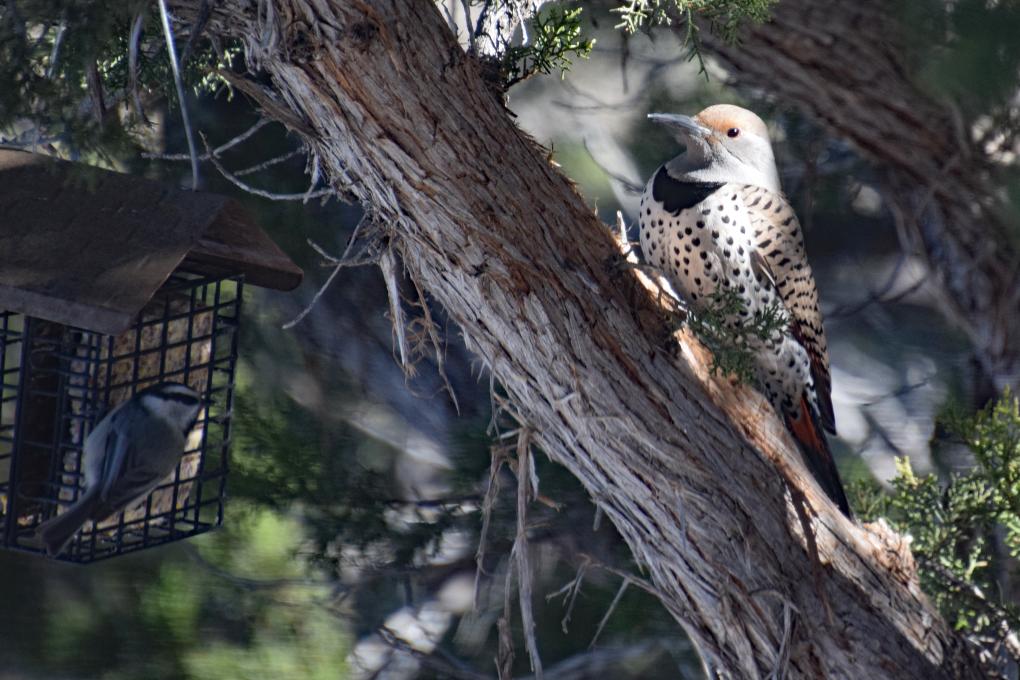
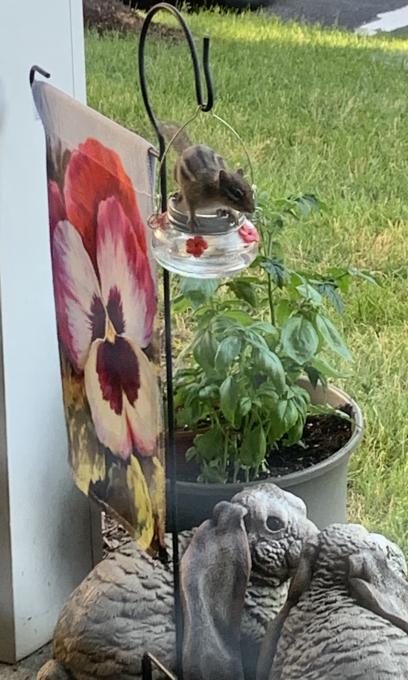



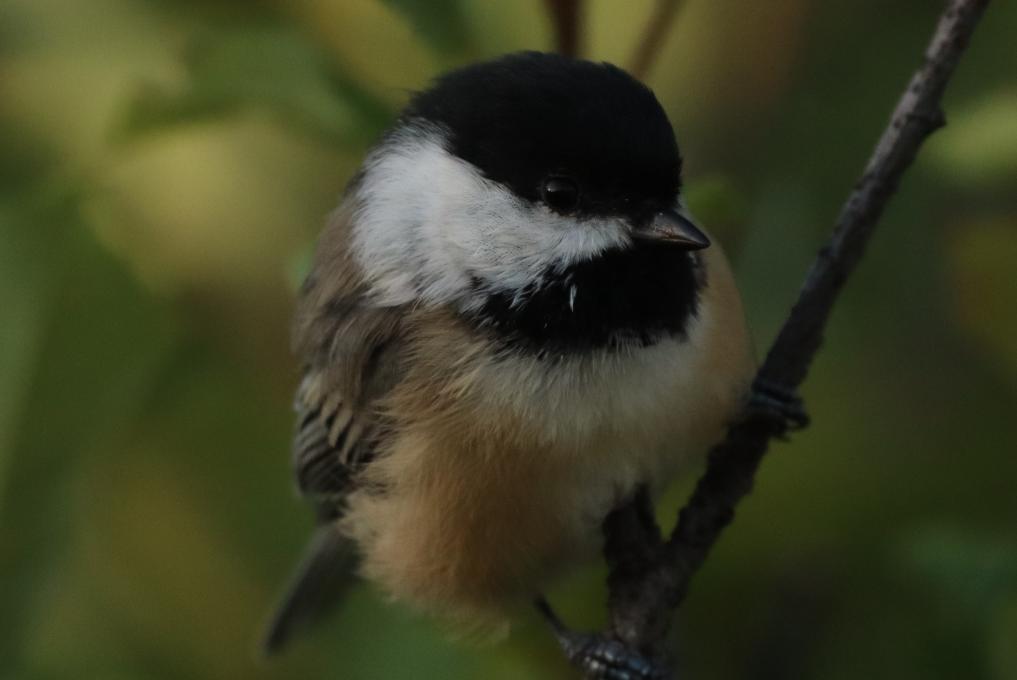 Activity 1. My two birds that I have been seeing in the backyard lately are the Black capped chickadee and the white crown sparrow. The chickadee is more of a plump bird as the sparrow looks like it is standing tall with more of a neck then the chickadee.
Activity 1. My two birds that I have been seeing in the backyard lately are the Black capped chickadee and the white crown sparrow. The chickadee is more of a plump bird as the sparrow looks like it is standing tall with more of a neck then the chickadee. 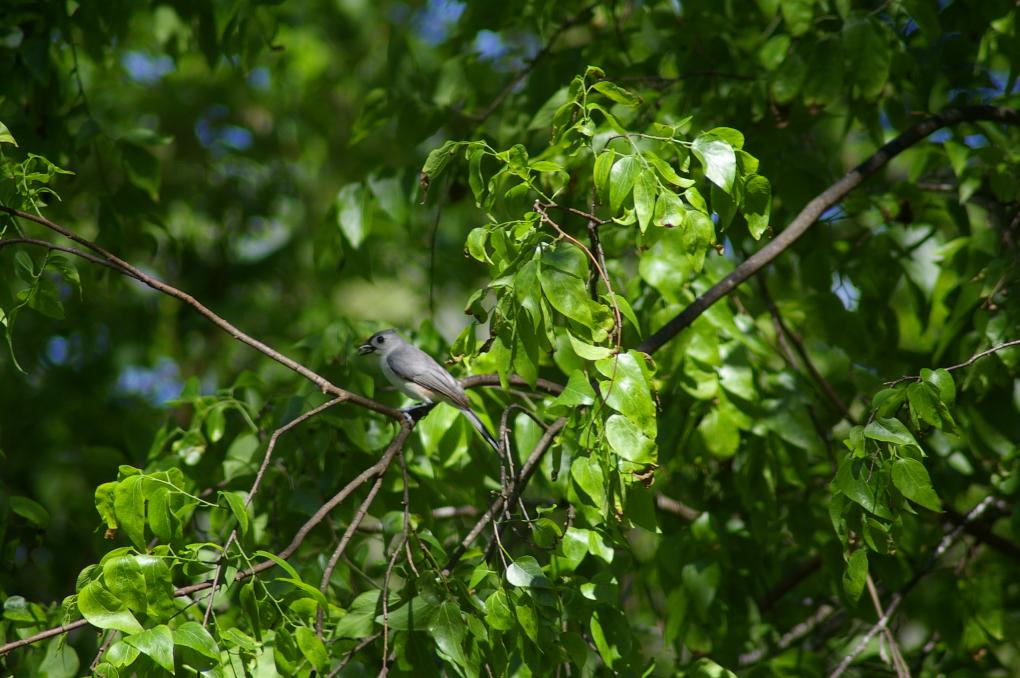 Tufted Titmouse: This tiny little bird flits around and rarely stays still. It hangs out primarily in the trees, with regular visits to a feeder for a seed. It will flit back several times a day. It has a beautiful dark gray crest and a white bib shading to pale yellow. Its gray wings taper to a darker gray wing edge. It has a very distinct call. I would swear the body must be primarily lungs! This is a loud little bird! Occasionally, it will perch at the top of the feeder while fluttering its wings and calling very loudly. From what I understand, that may either be a mating ritual or a juvenile wanting its parents. No matter, it's adorable!
Tufted Titmouse: This tiny little bird flits around and rarely stays still. It hangs out primarily in the trees, with regular visits to a feeder for a seed. It will flit back several times a day. It has a beautiful dark gray crest and a white bib shading to pale yellow. Its gray wings taper to a darker gray wing edge. It has a very distinct call. I would swear the body must be primarily lungs! This is a loud little bird! Occasionally, it will perch at the top of the feeder while fluttering its wings and calling very loudly. From what I understand, that may either be a mating ritual or a juvenile wanting its parents. No matter, it's adorable! 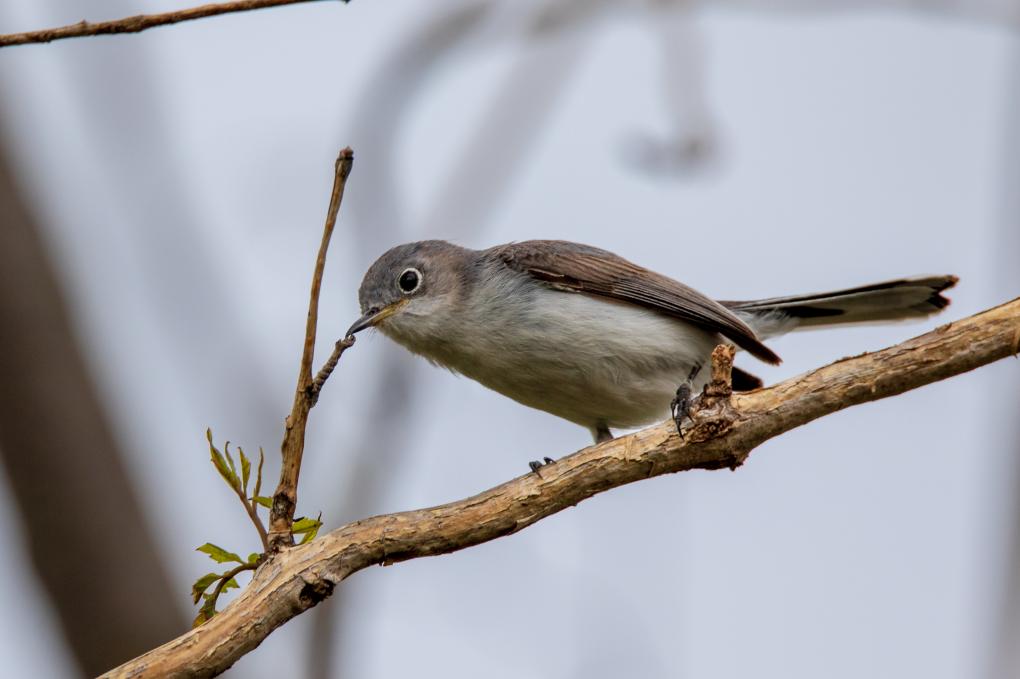
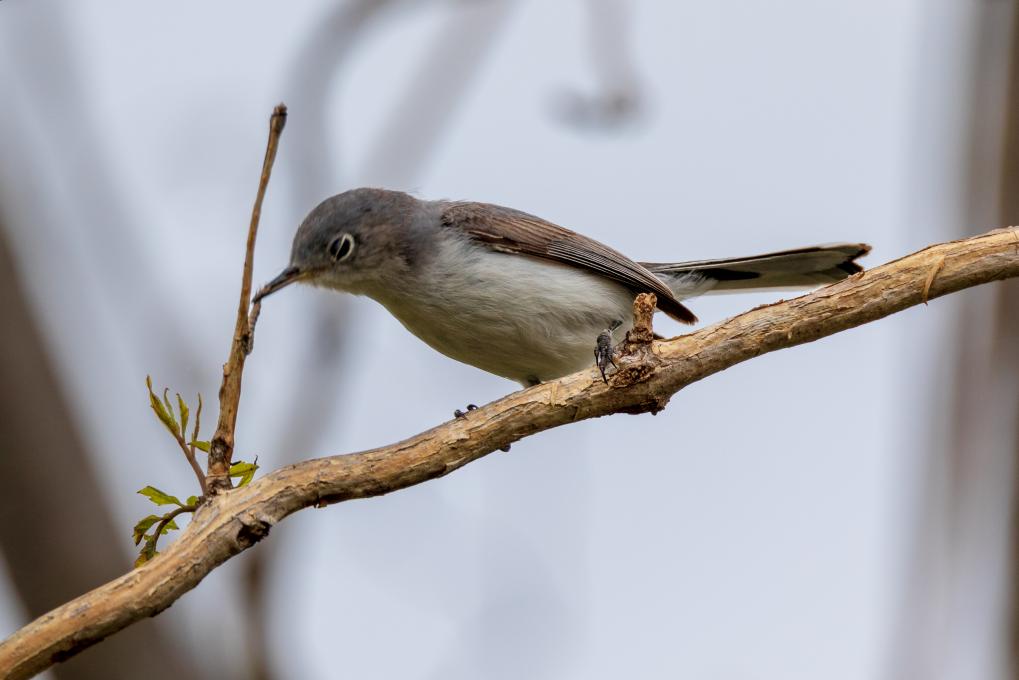
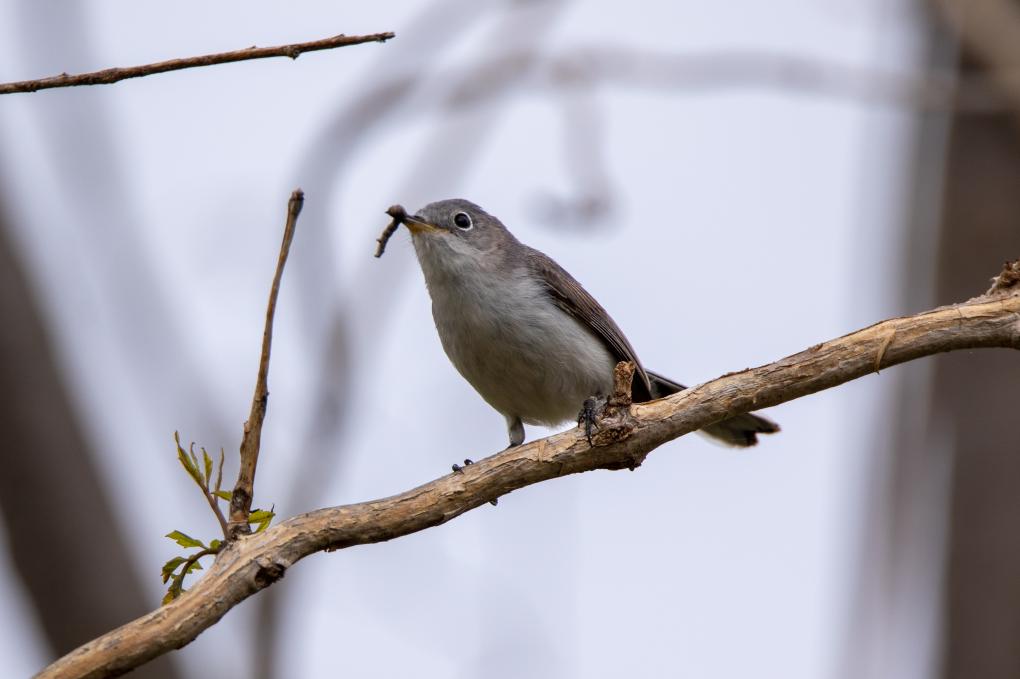 Activity 4: Right now, my favorite bird is the Pied-Billed Grebe. It's a cute bird that at first appearance may be confused for a small duck. Closer inspection shows it to have a shorter and sharper bill with a black ring (in season) vertically crossing both the upper and lower bills. The ones I've seen this year were reddish-brown and their bills were light gray. They have a long neck like a duck but a very understated pointy tail. Unlike ducks, they look very wet when returning from a dive. Unlike most ducks, they completely submerge and stay submerged for some time. They dive for fish and other aquatic animals. I have not been able to hear them make a sound yet. This is the first year I even knew they existed but I am now a very big fan.
Activity 4: Right now, my favorite bird is the Pied-Billed Grebe. It's a cute bird that at first appearance may be confused for a small duck. Closer inspection shows it to have a shorter and sharper bill with a black ring (in season) vertically crossing both the upper and lower bills. The ones I've seen this year were reddish-brown and their bills were light gray. They have a long neck like a duck but a very understated pointy tail. Unlike ducks, they look very wet when returning from a dive. Unlike most ducks, they completely submerge and stay submerged for some time. They dive for fish and other aquatic animals. I have not been able to hear them make a sound yet. This is the first year I even knew they existed but I am now a very big fan.